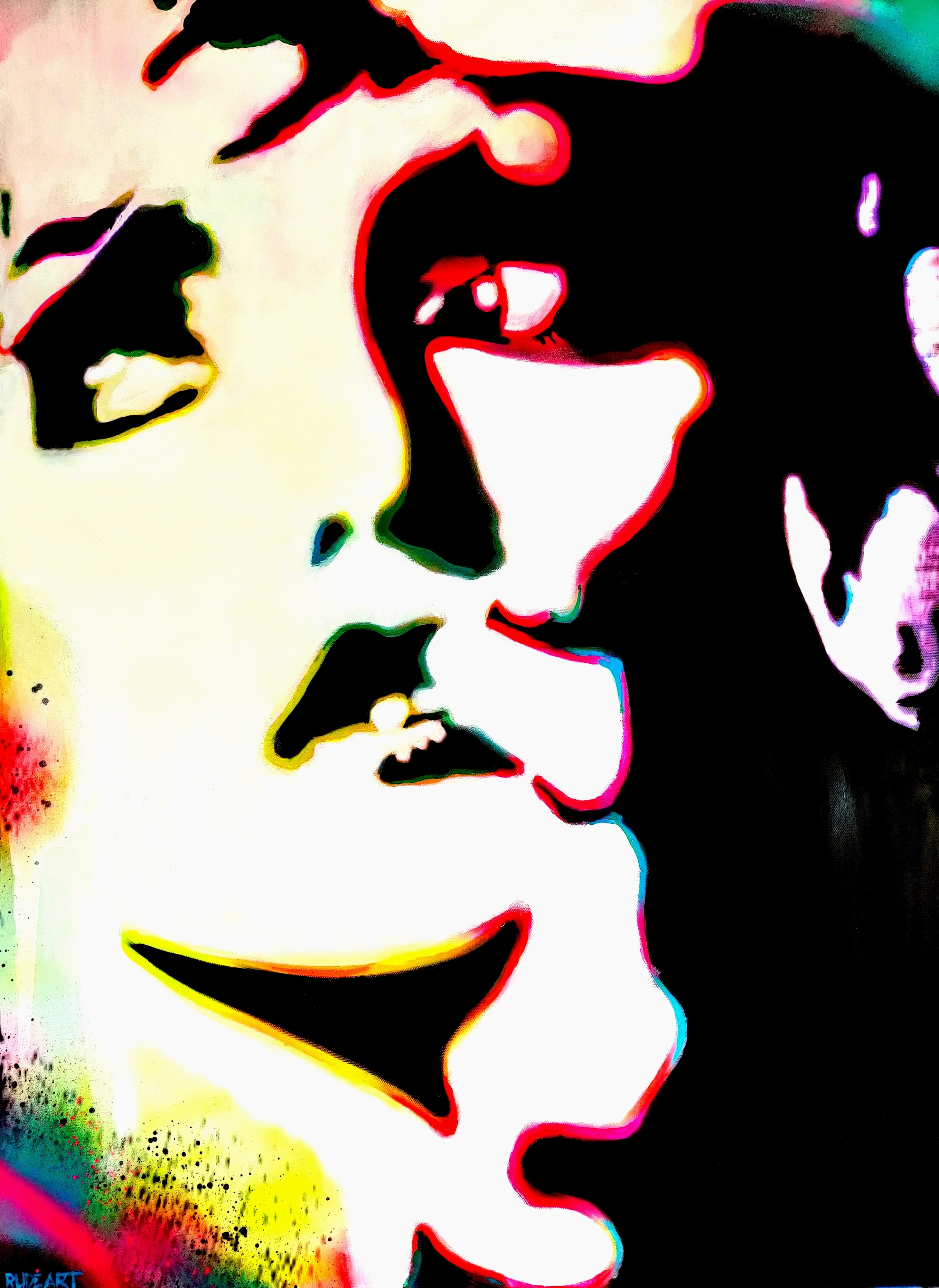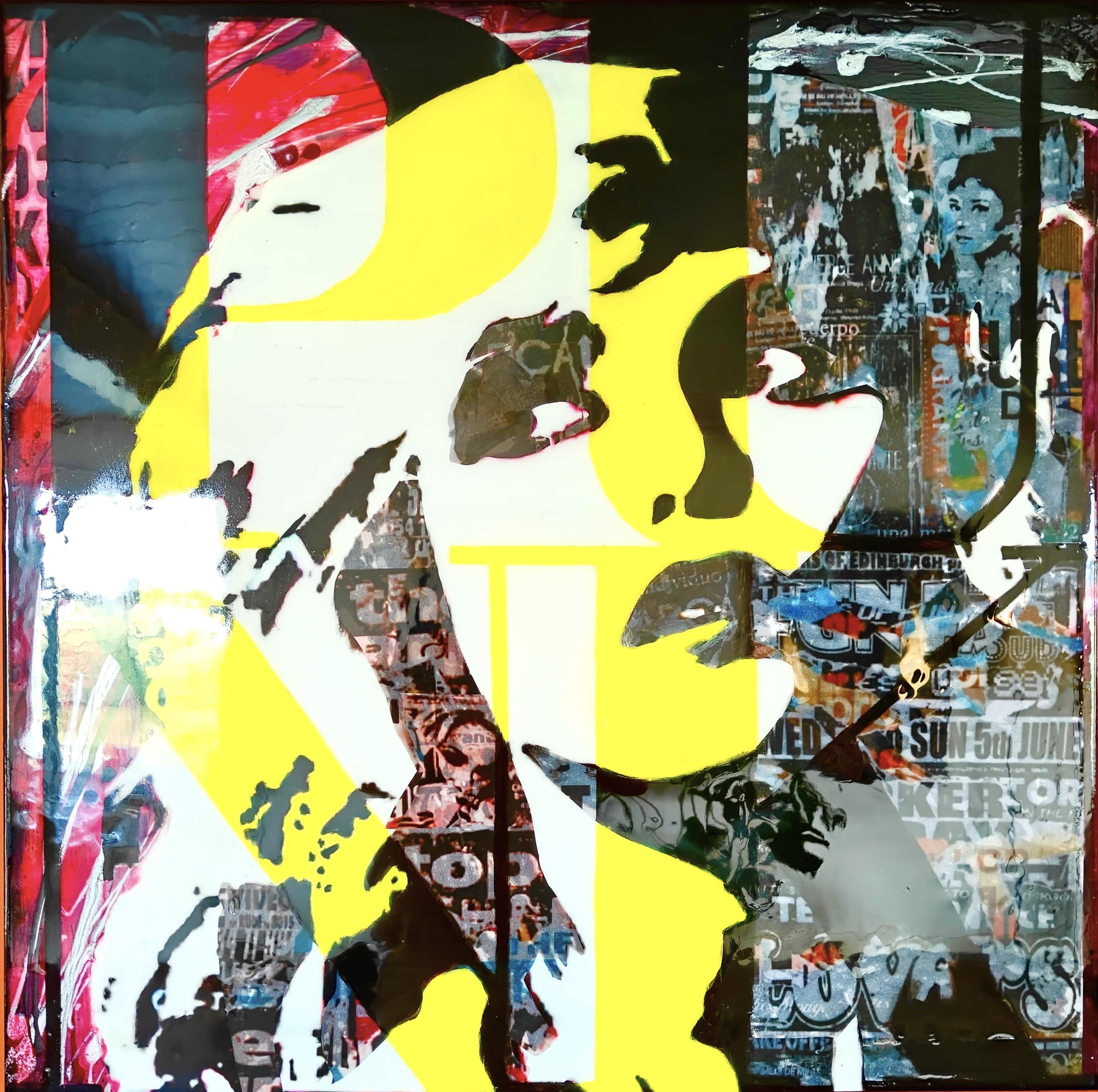2025-06-28
BEHIND THE PAINTINGS: DEBBY & PUNK

 DEBBY & PUNK: A Dialogue in Neon, Noise, and Contrast
DEBBY & PUNK: A Dialogue in Neon, Noise, and Contrast
In my studio, two portraits of Debbie Harry stand like echoes of each other DEBBY and PUNK. They’re built from the same source image, share common techniques, and speak in the same visual dialect. But they don’t say the same thing.
Each one explores different facets of punk: one vibrates with color and instinct, the other confronts with clarity and contrast. Where DEBBY dances in the flash of spray-painted rebellion, PUNK holds steady in monochrome structure and typographic weight. Together, they offer a kind of visual call-and-response between beauty and bite, form and attitude.
The Face That Started It
Both works are based on the same pose of Debbie Harry, an iconic expression that’s slightly off-center, her gaze turned away, eyes wide, unreadable. Maybe curious, maybe defiant. That ambiguity was key to both pieces. I built her image using a black-and-white stencil technique, applied cleanly but with space for emotion to slip through. The flatness of the stencil draws attention to her shape, her shadow, her legacy—and leaves room for the color and chaos to move around her.
“When I saw Debbie Harry on television as a kid, it wasn’t just her music, it was her presence. Cool and wild, punk and glamorous. That contrast stuck.”
DEBBY: The Raw Pulse
The first of the pair, DEBBY is a 60×80 cm mixed media portrait built on a graffiti-style base. I used layers of neon spray paint; pink, green, blue, yellow, in loose, spontaneous marks. These colors aren’t just background; they sneak up through the stencil image, especially where black meets white. The neon bleeds through like light from behind, outlining edges, creating a subtle glow. It gives the painting an almost electric atmosphere, like a poster half-torn on a city wall, lit by street lamps.
There’s no text in DEBBY, no overt statement. Just color, shape, and attitude. It’s visceral. Immediate. Her identity comes through the portrait, but also through the chaos surrounding it.
“DEBBY felt instinctive—like responding to music with motion. There’s more freedom here, more rhythm.”
PUNK: The Statement Piece
Then came PUNK, a square 80×80 cm work that builds on the same pose but pushes it in a different direction. Gone is the graffiti base—instead, I started with torn collage prints and typographic elements, placed only in the black area of her hair. It’s denser, more sculpted. Her face remains crisp and white, floating above the layered noise of the collage, like silence in a loud room.
Around her, I used a liquid acrylic pouring technique in pink, black, and silver. The paint flows and drips around her like energy caught mid-motion, but here it’s more contained than in DEBBY. More theatrical. It echoes the layered production of a punk track; messy but intentional.
What sets PUNK apart most is the bold lettering: the word PUNK, stenciled in Didone type across the portrait. Where her face shines white, the letters appear in hard yellow; where the background darkens, they drop into deep black. It’s a shout. A label. A reference to Robert Indiana’s LOVE, twisted into something louder.
“The word became part of the conversation. Not everyone recognizes Debbie on sight, but everyone recognizes PUNK.”
Similar Motions, Different Voices
Though they share a pose, both paintings diverge in feeling. DEBBY is kinetic—her neon aura feels like motion blur, a flash of youth in mid-shout. The portrait breathes through the rawness of spray paint, without explanation or caption. PUNK, by contrast, is deliberate. The typography gives it weight. The collage pulls it back in time. It asks the viewer to stay longer, read the textures, find meaning in the dissonance.
And yet, both are sealed the same way, with a thick layer of resin. This high-gloss finish enhances the vibrancy of the colors in DEBBY and deepens the sharp contrasts in PUNK. In both cases, the resin transforms the works: light reflects across them like stage light across a vinyl record. It’s not just a coating—it’s the final chord.
Two Sides of the Same Shout
Together, DEBBY and PUNK form a kind of diptych. Not identical, but in dialogue. One born from instinct, the other from intention. One dripping with color, the other edged with type. One humming a melody, the other spitting a lyric.
They capture what I remember from that first flash of Debbie Harry on screen: the contradictions, the charisma, the noise behind the cool. These aren’t just portraits—they’re echoes of a moment, played back louder and sharper each time.
Music is important to me, it helps me while creating, which music style or idol helps you to create your masterpiece?
Admin - 10:28:23 | Een opmerking toevoegen
Opmerking toevoegen
Fill out the form below to add your own comments